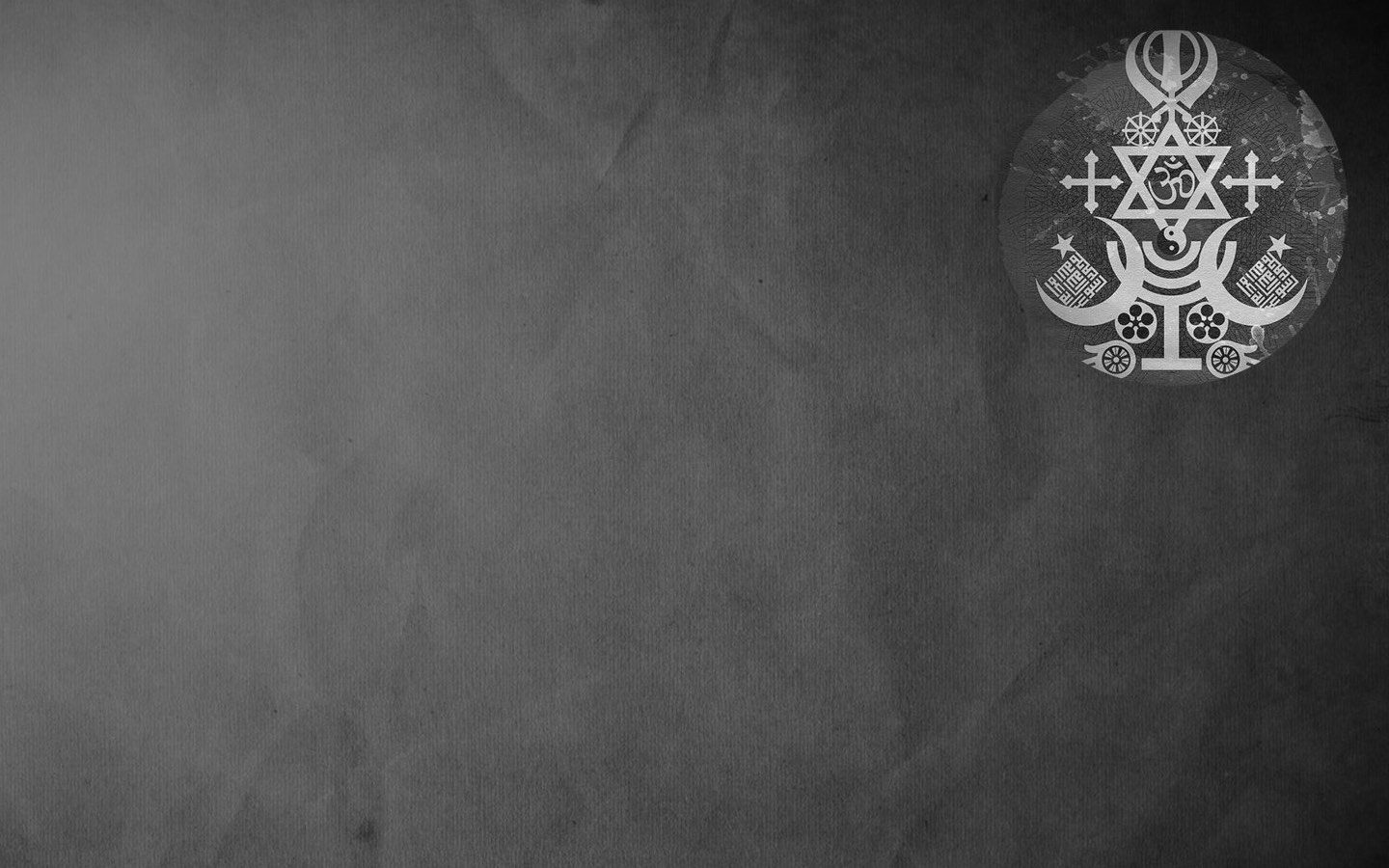For some time now, I have been interested in the evolution of religions in modern societies. This is a question that I consider of the utmost importance, and for which there is no straightforward path. What will the religious landscape look like in the coming years in modern societies? I have written converal times about the evolution of religious from the Middle-Age to the Enlightenment era in Europe, and how progressive secularist projects slowly emerged . What was my surprise when I discovered Benjamin Schewel’s essay, 7 Ways of Looking at Religion1. The author explores the future trajectories of religious ideologies, that some intellectual thinkers consider “unproductive and naïve, given the contingency and uncertainty that characterize human affairs”2. Much of the media landscape shines the light on New Atheism and rationalist thinkers, but such a tendency largely obscures access to the depths of such a problematic. How to understand the very structure of life in society without addressing the notions of spirituality, meaning, and purpose in it? Even if one addresses such notions outside any metaphysical consideration, one can not, however, deny the importance that religion plays and played in the whole of traditional or archaic societies3.
As Benjamin himself thinks, we can assume that religion will continue to play an important role in a range of political and social affairs. After all, 84% of the world is still religious to this day4. It should also be mentioned that progressive secularist projects “have failed to deliver their promised social goods”5, for if this had been the case, neither the USSR under Stalin nor the Nazi regime would have emerged6. Although politico-religious doctrines greatly shaped the spiritual landscape from the 3rd millennium BC to the end of the 17th century, let us note the revival for a group of communities to reclaim themselves of spiritual practices detached from all doctrine (movements such as the “New Age” are an accurate depiction of such a tendency), independently of the progress of secularist projects. Such an attempt seems to underline the need for the realization of a religious ideal that secondary religions, that is to say, derived from schisms and syncretisms, have not succeeded in fully reaching.
It is a fairly complex project, not without difficulty. From this point of view, in the context of such a development, academics and intellectuals try to understand the role and function of religious experience within the confines of biology and psychology7. What can be speculated about the emergence of a radical change of social and cultural spheres that would allow the many religions to co-exist? To this date, more than 4200 religions have been identified8. B. Schewel foresees himself the emergence of a second axial age, as an attempt to support a foundational spiritual transformation, with a new kind of internal diversity9. Such a shift would allow us to realize that “capitalism, democracy, and other such forces thus should not be considered the final stage of human evolution, but rather as forces that are creating the conditions under which a distinctly new pattern of collective life can begin to emerge”10. Such an assumption has at least the merit to help us conceiving that religion can be an answer to the many existential threats that hung above modern societies like the sword of Damocles.
Will the return to a spirituality systematically lead to the decline of capitalist ideology, or will we rather witness the development of a free market for new religions, through which a plural model would allow the redefinition of faith and related cultural practices? It would not be surprising that, through such a phenomenon, we would be witnessing the development of new dynamics, allowing an increasing number of religions to expand, develop and flourish. Indeed, religion is much more than an instrument of secular ambitions, and this explains why secular thought hardly contradicts fully such a prospect. We seldom witnessed a complete disappearance of religion in modern societies that are rapidly evolving. Paradoxically, the naturalistic and consumerist ideals, as proposed by capitalism, appear as antithetical to a real spiritual realization11.
In contrast to such a trajectory, it can be assumed that religion will gradually disappear from life in society, perhaps influenced by an increasingly complex and mechanical understanding of the world, in which religion and spirituality would only constitute a meager answer. This is due to the fact that societies undergo important and rapid transformations over time, while the religious foundations try above all to stand the test of time. How then to facilitate a renewal of religious in such circumstances? This is all the work that awaits us. Of course, it would be reductive, if not misleading, to think that such complexity systematically leads to the decline of religion. We have for proof the axial age during which many religious thinkers and movements have been able to cope with many difficulties, hitherto unknown to us12. We can also assume an in-between for the above hypotheses: it may be that we will be witnessing a religious renewal through which society accepts that religion and spirituality are inherent in all human existence, in short, that the social sphere ends up reintegrating a praxis into the identity corpus that claims the very nature of religious practices. From there, the gradual emergence of a global and unified religion will make it possible to understand with greater accuracy all the questions concerning the contribution of religion to society. Thus, we can speak here of a “religious secularism”. Thanks to the latter, we can hope for literalism, extremism, and oppression to become relics of the past.
There is no doubt that religion has helped humanity to cope with many social crises in history; thus, it would be regrettable not to rigorously analyze such an assumption. If such questions appear to us to be complex, they are only the indirect representation of the nature of our societies, in which the dominant power, that is to say the State, relegates to the periphery all metaphysical questions, which are, however, still present to this day. As for the dominant ideology, it responds only faintly to the subject. At best, spirituality is considered a relic of the past, at worst it is only a fantasy or superstition, while the New Atheists reinforce polarizations in the debate, just as they only want to see the burden that is the religion disappear. There is in the public discourse a set of contradictions inherent to social classes: if intellectuals and aristocrats want to abolish religion, this is in a way opposed to the desire of the working classes, wishing to make a positive contribution to their lives. At a deeper level of reflection, such a problem emphasizes the concerns of an elite wishing the best for the collective, but without truly considering the needs of all its members13.
The secularity of a state implies that it does not interfere with the private sphere, although until now we have only witnessed a war between bad ideologies, locked at the extremes, and in which one opposes faith to reason. But this is a simplistic reduction; we could indeed work with a set of axioms that do not systematically cancel each other out. This highlights the importance of the road that remains to be traveled if one wishes to understand needs at the level of the individual, but also to define a collective sphere that can function within its own definitions.
Here is my personal point of view: to this day, we have not been able to fully decipher the role and function of religion in societies, for at least three reasons: first, the complexity of the phenomenology of religion, secondly, the importance of many stigmas around religion and spirituality – preventing a deeper conversation from taking place on a large scale – and thirdly, the impossibility of conceiving modern societies as a unified whole, and even if globalization brings all societies together as similar. In fact, we have to engage in a dialectic in which individual experience and individual representations of the world function in a broader context, that is, society. If not, we are reduced to missing the true meaning of the religious experience.
This gives us a bit of information on the modern landscape, this also explains why, as the forces of modernity progress, religion does not decline. On the contrary, more than ever, religious faith is present where the least expected. Philosophers, such as Dennet or Dewey, are always perplexed as to the presence of religion in modern societies. They see a resistance in the global discourse that makes us indisposed to analyze and understand religion through the intellectual tools we have, namely reason and empiricism. It may be that a scientific reading of religion cancels de facto a true experience or faith or belief in God. Such resistance explains, I think, the apprehension for many to analyze with a scientific reading the many metaphysical claims that religion supports.
We live in a fascinating time, but difficult to understand. Throughout history, we have known some societies in which scientific progress and faith coexisted fully14. I am however hopeful, naive perhaps, that one day we may come to a deeper understanding of the importance of religion, thus allowing us to spearhead spiritual ideologies that could consolidate this sense of secularism’s failure, political prejudices, and intellectual gridlocks that pervade much of the contemporary landscape.
Endnotes
- B. Schewel, Seven Ways of Looking at Religion: The Major Narratives, Yale University Press, 2017.
- Ibid, p. 190.
- Life & Death, Mesviscissitudes, 2017.
- Jennifer Harper, 84 percent of the world population has faith; a third are Christian. The Washington Times, 2012.
- B. Schewel, op. cit, p. 190.
- Jordan B. Peterson discusses this phenomenon in some of the episodes of the Maps of Meaning series.
- Jordan B. Peterson, Maps of Meaning: The Architecture of Belief. Routledge, 1999.
- Religion, Science Daily.
- B. Schewel, op. cit, p. 191.
- Ibid, p. 192.
- Rational Buddhism, Confronting Materialism and the Fallacy of the Mechanistic Mind, 2013.
- Axial Age is a term coined by Karl Jaspers, in the sense of a “pivotal age” characterizing the period of ancient history from about the 8th to the 3rd century BC. According to Jasper, new ways of thinking appeared in Persia, India, China and the Greco-Roman world in religion and philosophy, in a striking parallel development, without any obvious direct cultural contact between all of the participating Eurasian cultures. Source, The Axial Age, Wikipedia.
- Harris suggests that it is possible to find meaning and appreciation for life without the need for any faith. See Death and the Present Moment. Global Atheist Convention, 2012.
- For example, the discoveries in mathematics in medieval Islam or in India from 1200 BCE until the 18th century.


Pingback: Modern Societies, Dialectic on Contemporary Beliefs - Mes Vicissitudes